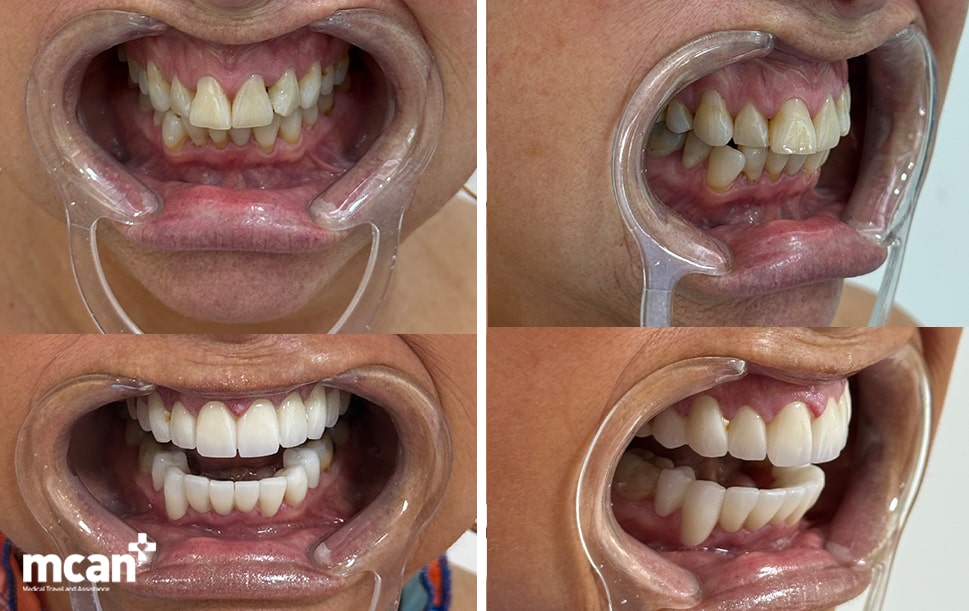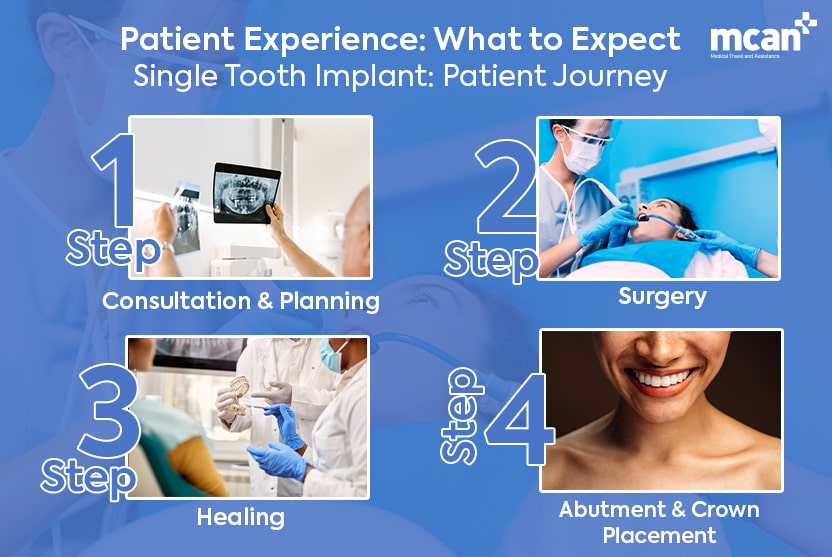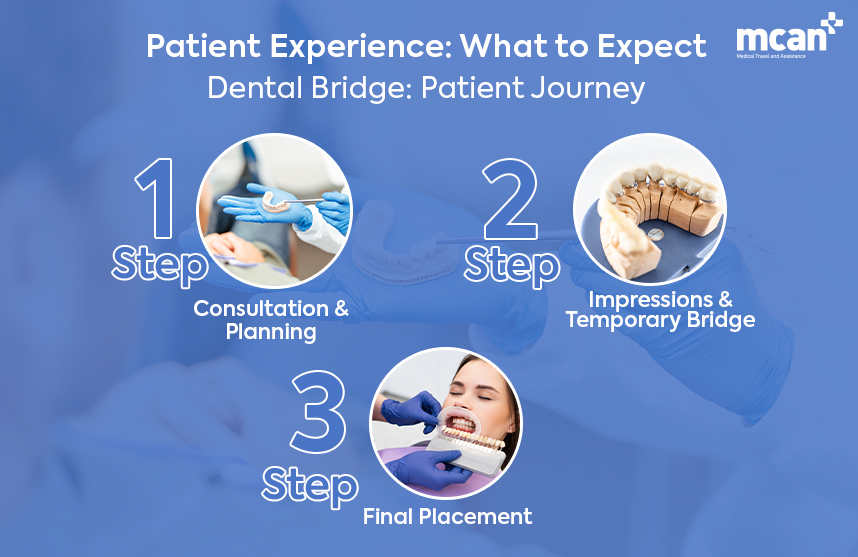Losing a single tooth can feel like a minor setback, but the way you choose to replace it has long-term consequences for your oral health, confidence, and budget. Two of the most popular solutions, single tooth dental implants and dental bridges, each come with distinct advantages and considerations.
For patients weighing their options, the differences aren’t always obvious at first glance: Should you go for a modern implant that mimics the structure of a natural tooth, or a dental bridge that spans the gap using neighboring teeth for support?
In this guide, we’ll break down what each treatment involves, compare them head-to-head, and highlight the key factors to help you make an informed decision that’s right for your smile and lifestyle.
A single tooth dental implant is considered the gold standard for replacing one missing tooth. This treatment involves surgically placing a small titanium post into the jawbone where your tooth is missing. Over a few months, the implant fuses with the bone, a process called osseointegration, creating a sturdy, artificial root.
Once healed, an abutment is attached to the implant, and a custom-made crown is secured on top. The result is a new tooth that looks, feels, and functions almost exactly like a natural tooth. Importantly, this method does not rely on support from neighboring teeth, which helps preserve your overall dental health and jawbone integrity.
Key Benefits of Single Tooth Implant:
A dental bridge is a tried-and-true method for replacing one (or sometimes two) missing teeth by literally “bridging” the gap between healthy teeth. The most common type, a traditional bridge, uses the natural teeth on either side of the gap as anchors (abutments). These supporting teeth are typically filed down and fitted with crowns, and an artificial tooth (pontic) is suspended between them.
Key Benefits:
When it comes to replacing a missing tooth, both implants and bridges have distinct advantages and trade-offs. The table below highlights the most important differences in real-world terms:
| Factor | Single Tooth Implant | Dental Bridge |
|---|---|---|
| Appearance & Feel | Most natural look and feel, preserves gumline | Good esthetics, but may change with gum over time |
| Durability/Longevity | 15+ years to lifetime with good care | 7–15 years on average, may need replacement |
| Impact on Neighboring Teeth | No effect, leaves healthy teeth untouched | Requires grinding of adjacent teeth for support |
| Bone Preservation | Yes, prevents bone loss at the site | No, bone may shrink under the missing tooth |
| Procedure Time/Recovery | Longer (months; includes healing after implant surgery) | Shorter (usually 1–2 weeks; no surgery required) |
| Maintenance | Clean like a natural tooth, easy hygiene | Special cleaning tools needed under the bridge |
| Cost (Initial & Long-Term) | Higher initial, lower over time (due to longevity) | Lower initial, may cost more long term (replacements needed) |
Choosing between a single tooth implant and a dental bridge isn’t just about personal preference: Your dental anatomy, medical history, and treatment goals all play a role. Here’s what to consider:

To help you make a truly informed decision be sure to check out our article Choosing the Best Dental Clinic in Turkey, which highlights what sets top clinics apart and what international patients should consider before booking.
Choosing between a single tooth implant and a dental bridge involves weighing distinct advantages and drawbacks. The table below summarizes what you need to know:
| Key Takeaways | Single Tooth Implant | Dental Bridge |
|---|---|---|
| Pros | – Preserves jawbone- No impact on neighboring teeth- Highly durable (10–20+ years)- Natural look & feel- Easy to clean (like your own tooth) | – No surgery required- Faster treatment & healing- Lower initial cost- Effective if adjacent teeth need crowns anyway- Suitable for patients with less bone volume |
| Cons | – Surgical procedure required- Higher upfront investment- Longer timeline (healing needed)- Not ideal with severe bone loss (without graft) | – Requires grinding down adjacent teeth- Does not prevent bone loss in gap- May need replacement every 5–10 years- More challenging to clean under pontic- Can compromise support teeth over time |
When deciding between a single tooth implant and a dental bridge, understanding what the journey actually feels like can help you set realistic expectations.

Most patients describe mild to moderate post-surgery discomfort, managed with medication and ice packs. Swelling typically subsides within a few days. Regular check-ups ensure smooth healing.
Chewing and speaking feel almost natural with the final crown. Cleaning is straightforward; just brush and floss as you would a normal tooth.

There’s usually minimal discomfort, mostly from reshaping the adjacent teeth. Most patients resume normal activities the next day.
A bridge feels comfortable after a brief adaptation period, but you’ll need to learn to clean under the “pontic” (false tooth) using floss threaders or interdental brushes.
Choosing the right clinic is as important as choosing the right treatment. At MCAN Dental, our focus goes beyond replacing a single tooth. We’re committed to giving every patient a comfortable, predictable, and confidence-boosting dental experience in Istanbul.
Why international patients choose MCAN Dental for implants and bridges:
If you’re deciding between a single tooth implant and a bridge, MCAN Dental provides the clinical skill, honest advice, and patient-focused care that makes the journey as smooth as the results.